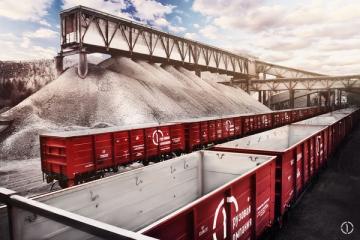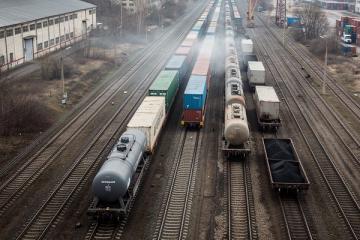
The amended Waste Management Act (“AWG”, short for “Abfallwirtschaftsgesetz” in German) has been in effect in Austria since the beginning of the year — offering enormous potential for climate protection as well as environmentally friendly waste transportation by rail. Waste transports with a total weight of more than ten tonnes must be transported by rail if the distance exceeds 300 km.
In close collaboration with new and existing customers, RCG has already developed a variety of logistics concepts that are successful both operationally and economically. Numerous contracts have been signed and sealed and an initial assement shows: 200,000 tonnes of waste previously transported by trucks are now being transported by rail through the Waste Management Act. That is equivalent to more than 11,400 truck journeys* — if you lined up all of these vehicles from Vienna, you would end up with a traffic jam stretching for about 200 kilometres on the motorway all the way to Graz. Avoiding these journeys thus results in a significant benefit to the environment.
Every shipment counts
RCG already possesses many years of experience in waste management and offers efficient logistics solutions to both new and existing customers, both nationally within Austria and internationally beyond the country’s borders. Three examples:
- The waste disposal company böhler Abfall GmbH, in connection with a rail-logistics concept from RCG, won the tender issued by the Vorarlberg Environmental Association for transporting sewage sludge. To be more specific, up to 12,000 tonnes of sewage sludge are transported to Lower Austria every year.
- The Waste Management Act also applies to international import, export, and transit traffic. For the Italian company DIFE, RCG transports 5,000 tonnes of municipal waste per year from Italy to the Netherlands for thermal recycling — crossing Austria on almost 1,600 kilometres of rail.
- LINZ AG has been a long-standing customer of RCG. Since the beginning of the year — in addition to the annual 78,000 tonnes — RCG has been transporting an annual volume of 7,500 additional tonnes of municipal waste from Graz to Linz.
Sidings and loading bays accelerate the shift from road to rail
Last but not least, the topic of loading bays and sidings has become the focus of ÖBB-Infrastruktur AG. In the current framework plan, an additional amount of approximately 4 million euros per year has been allocated to the modernisation and expansion of loading bays and private sidings. This way, the necessary infrastructural conditions can be established, making the transition to rail even more attractive for future partners. The increased use of sidings by companies is another essential step towards achieving Austria’s climate targets.
Just recently, the fourth connecting railway was put into operation in Lower Austria for a major customer. In 2022, the Fliegerhorst Brumowski/Langenlebarn siding was fully renovated and re-launched together with the Austrian Armed Forces, and a siding was built at the Freudenau Port in Vienna in partnership with the company Bau Beton. Currently, around five new or existing sidings that are in need of renovation as well as eight modernisations of loadings bays are in concrete planning.
*Assuming 17.5 tonnes is transported in each HGV, according to the Herry-Studie.





